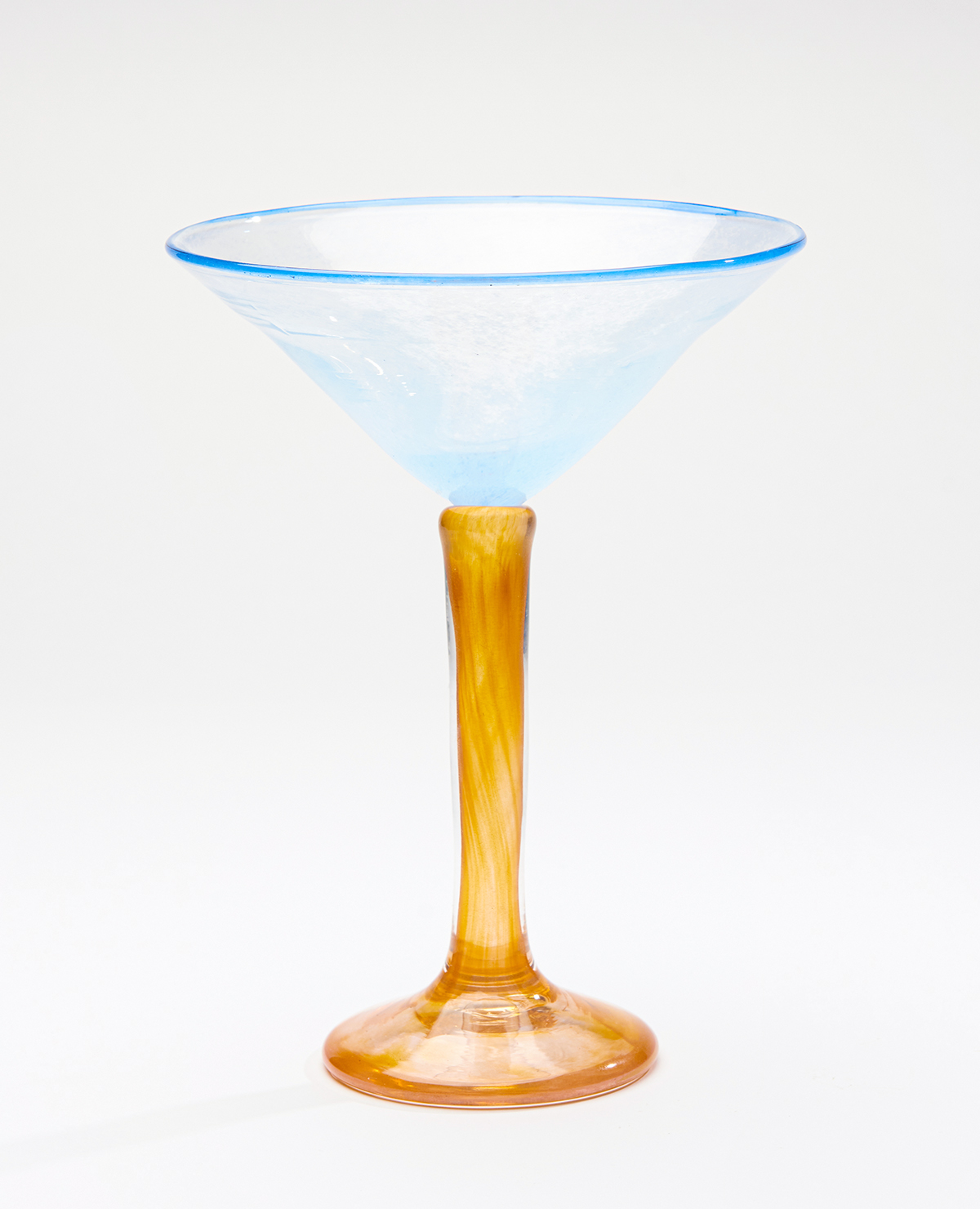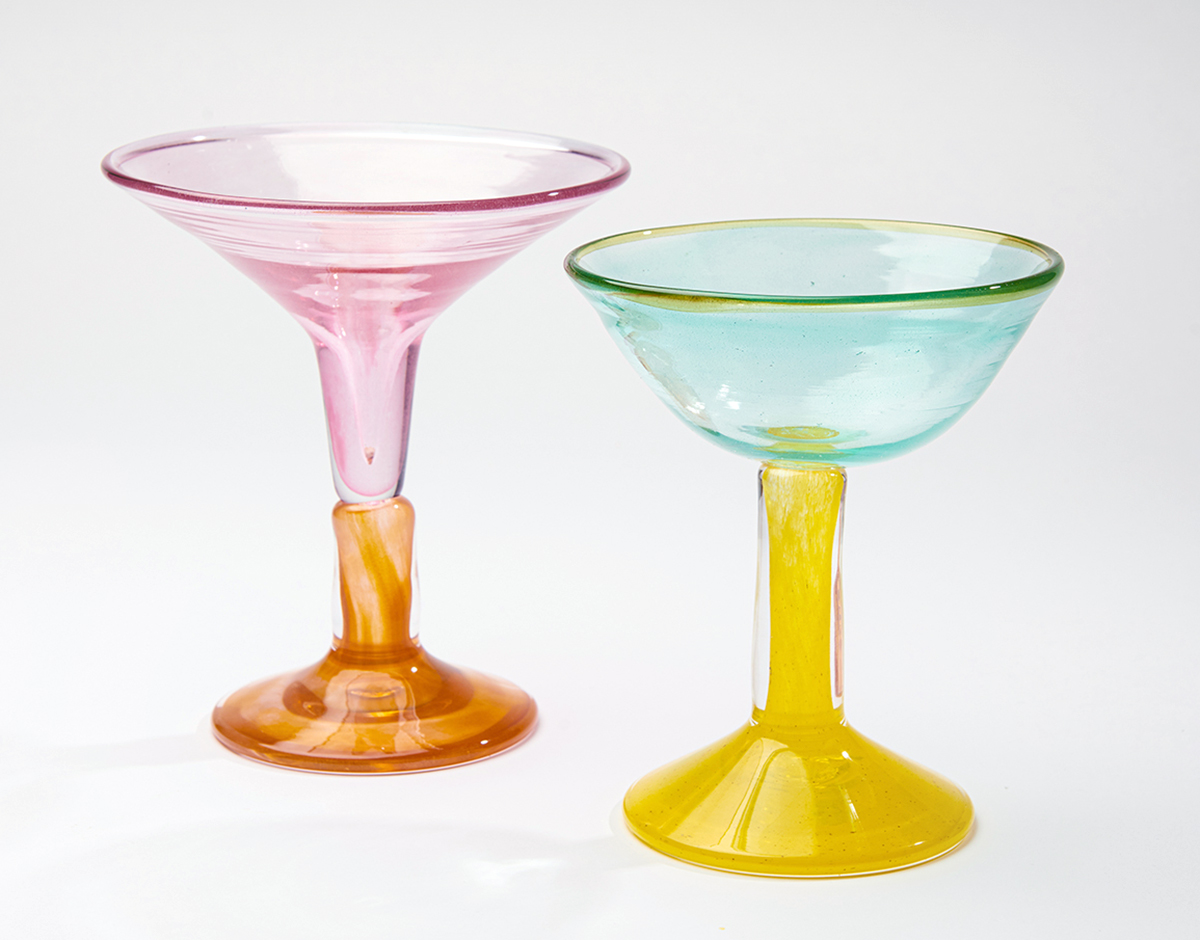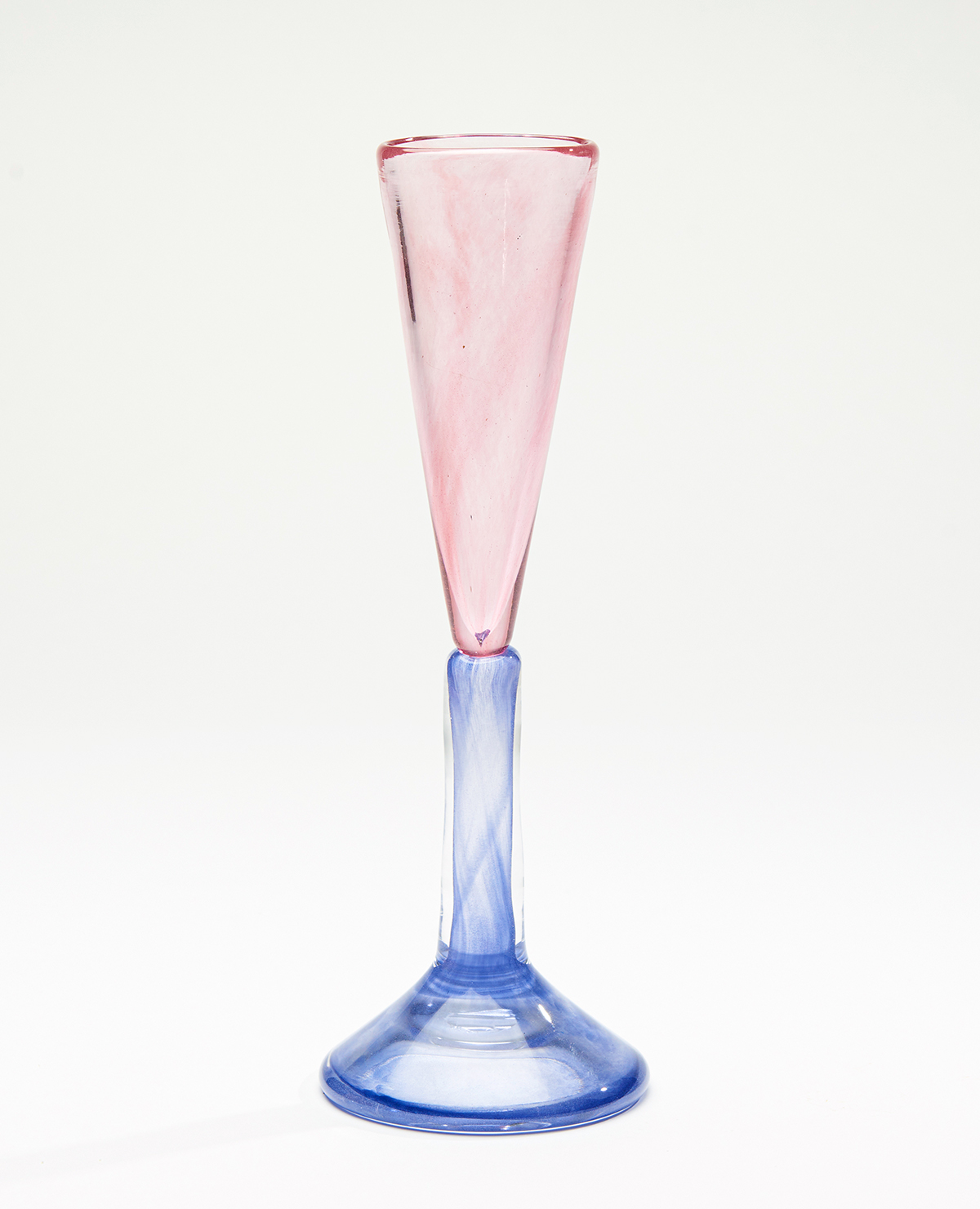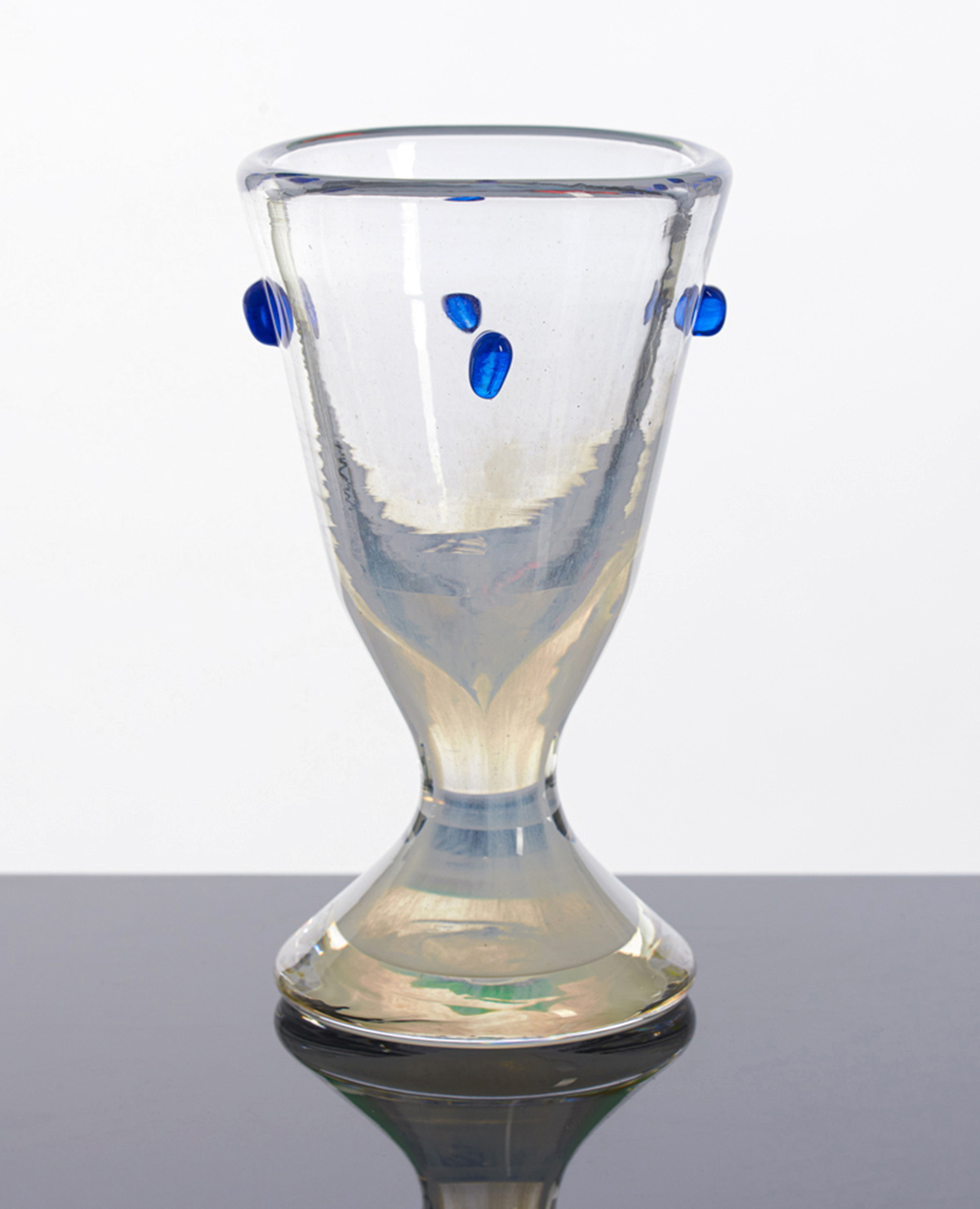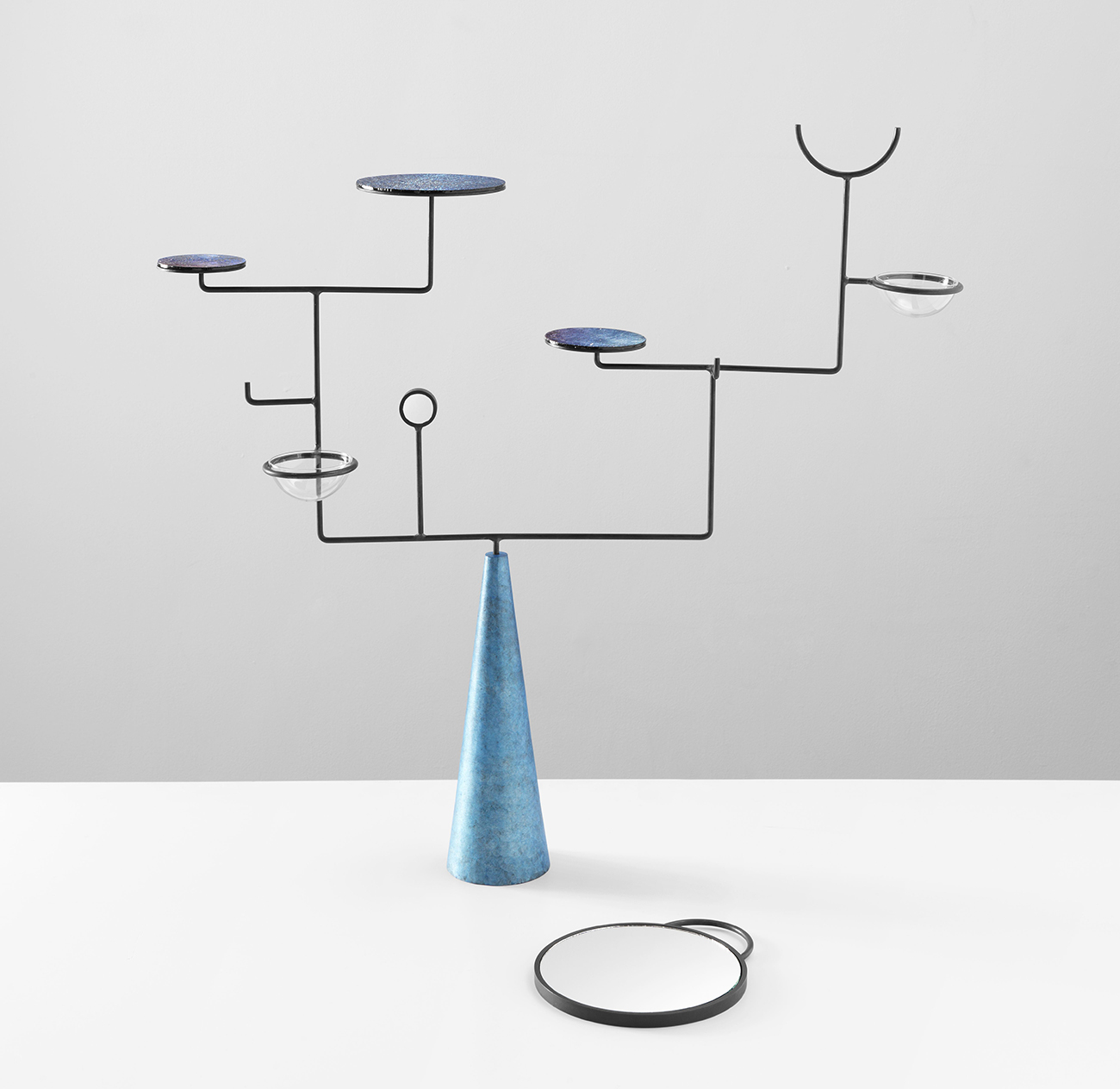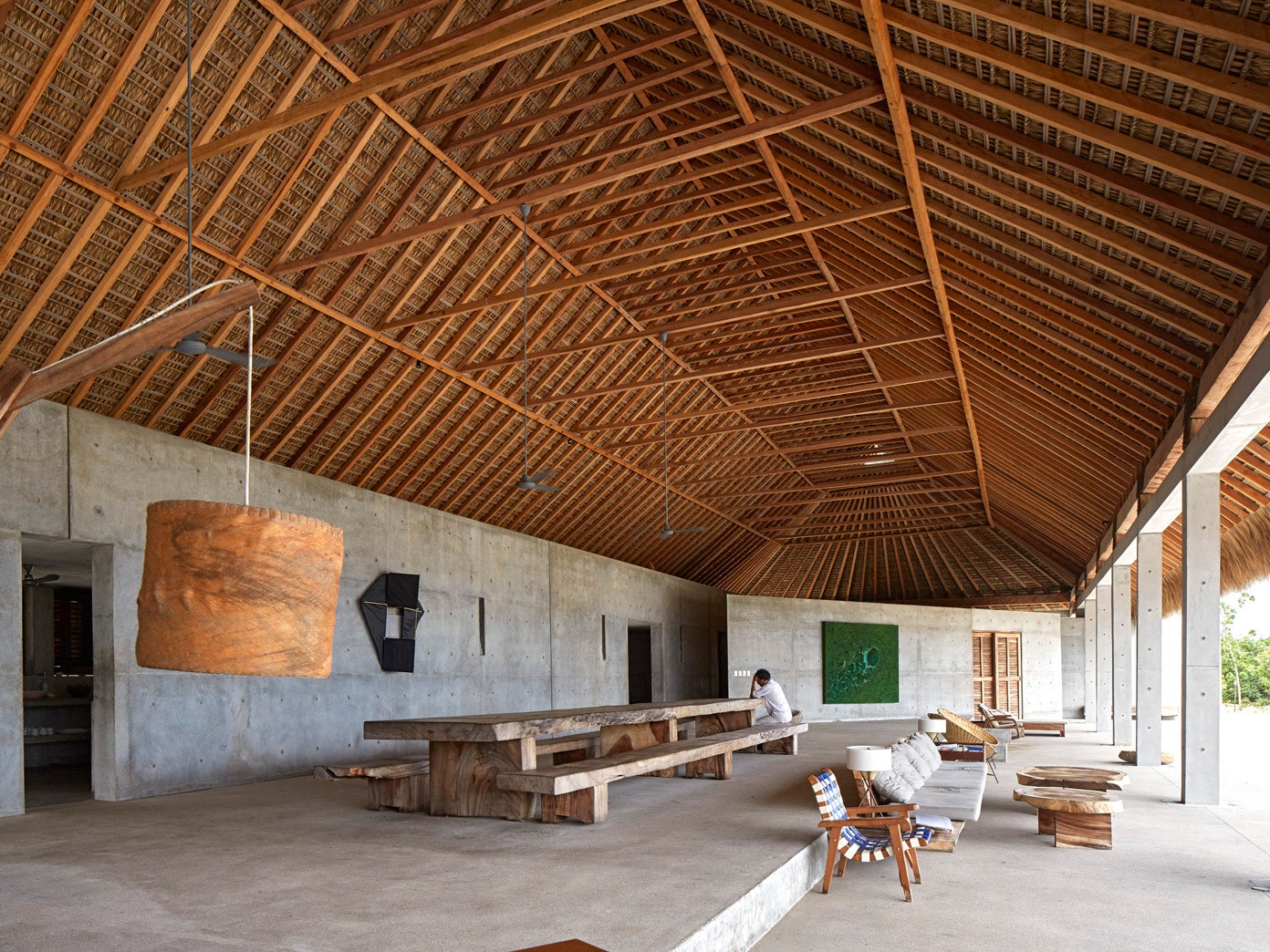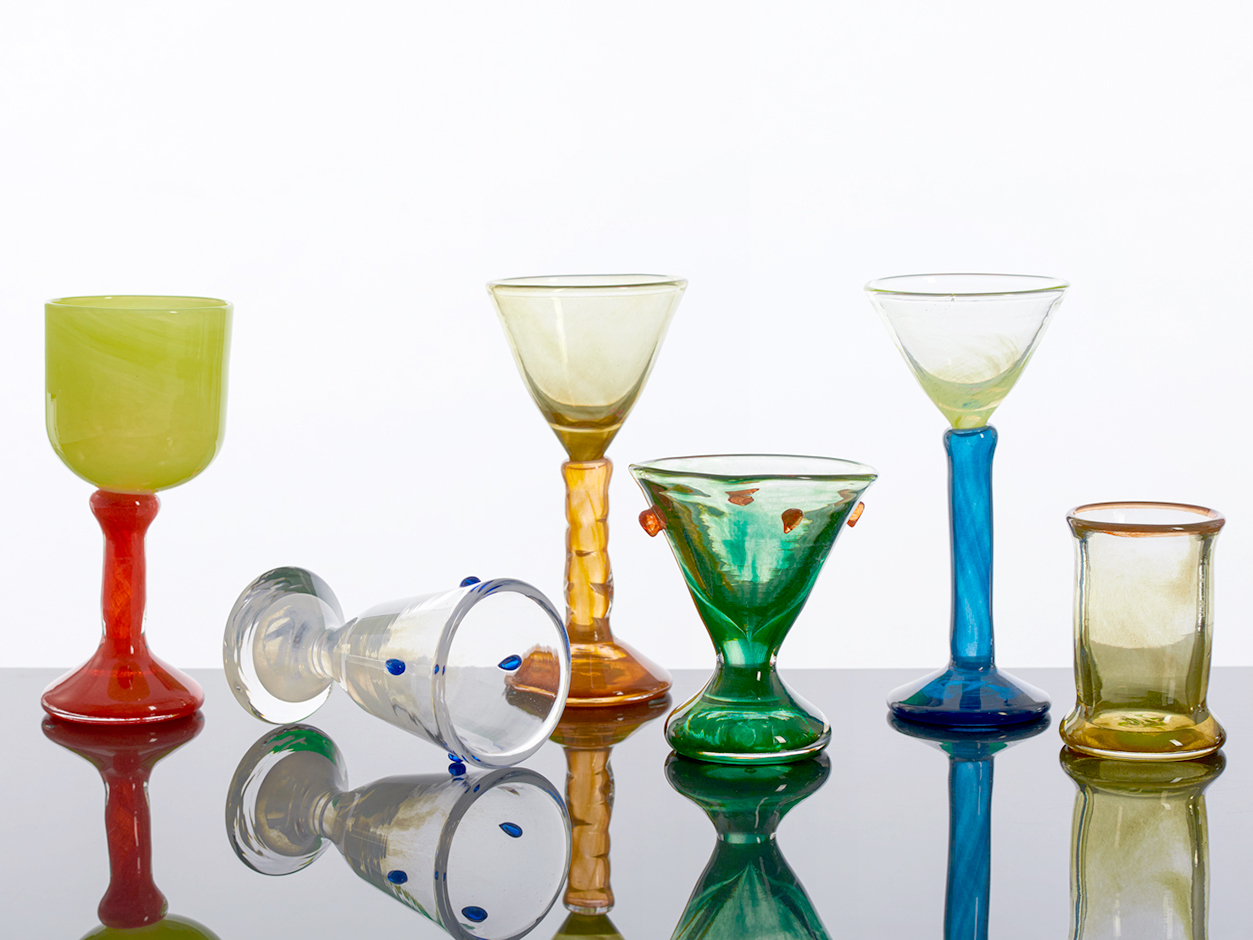
05.21.21
Up and Coming
The Dutch Designer Making Colorful, Jewel-Like Cocktail Glasses
While we (sort of?) love classic crystal as much as the next person, we’re partial to glass vessels that feel like talismans, with shapes sprung from sci-fi, or color combinations that are equal parts Memphis and sweets shop. What can we say? We have a type. And so it follows that the work of Boris de Beijer, a Netherlands-based artist who cut his teeth creating less-than-practical jewelry, caught our eye.
For years, de Beijer designed purely ornamental vessels made from synthetic and non-traditional materials like resin and pigmented polyurethane cast by hand. That period was spurred by an invitation to design cocktail glasses for a film set in a jazz club of the future. Still, he was inspired by craft and traditions of the past — in particular, ancient Roman glassware. “Since making those cocktail glasses, people have frequently asked me why I didn’t make them in ‘real’ glass,” he said. And so he did. Designing out of his father’s studio and working in close collaboration with the renowned glassblowers at Van Tetterode Glass Studio in Amsterdam, de Beijer has created his first series of glassware made exclusively for Side Gallery in Barcelona. We recently chatted with de Beijer about craft techniques, the unseen power of sculpture, and design work as alchemy.

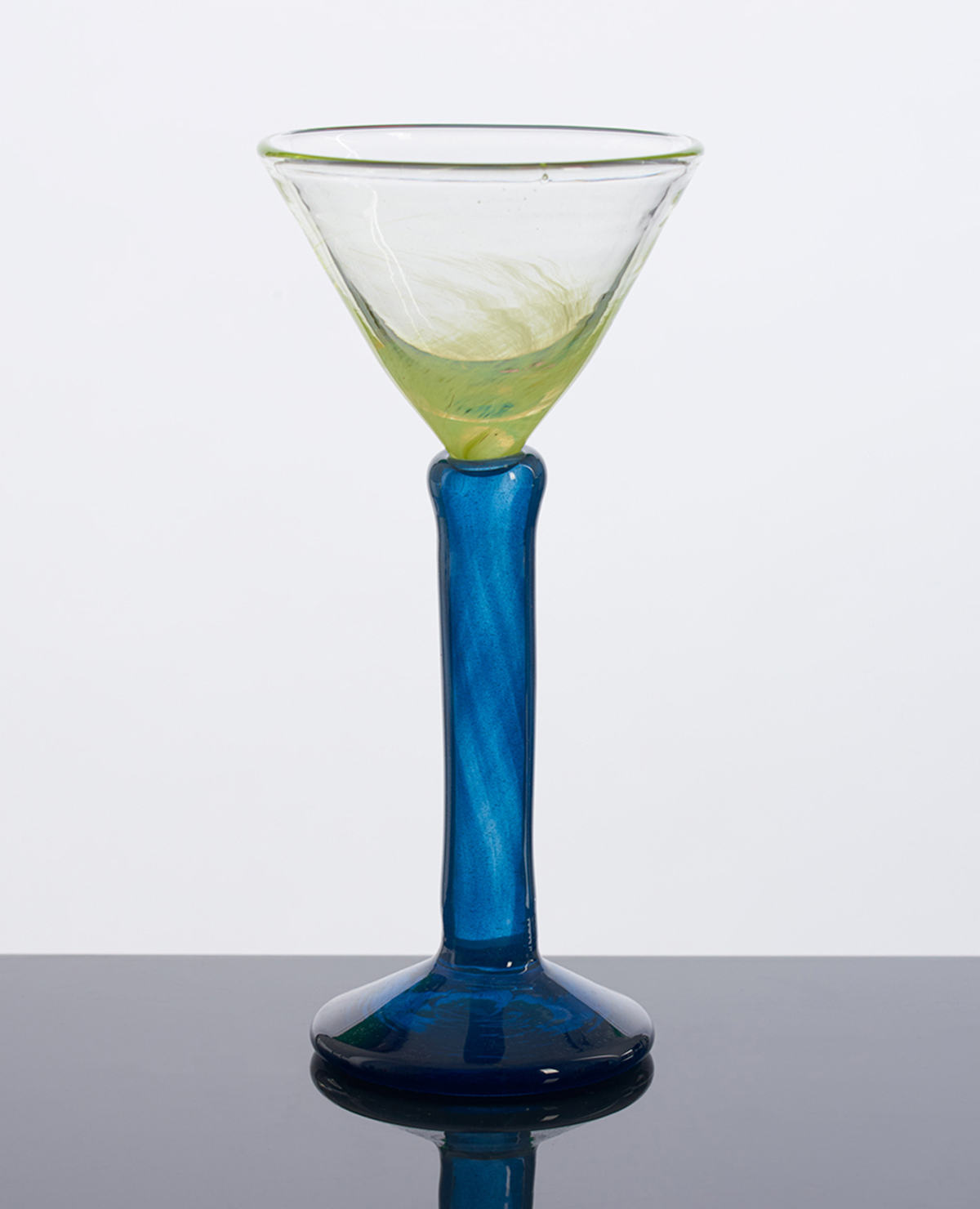
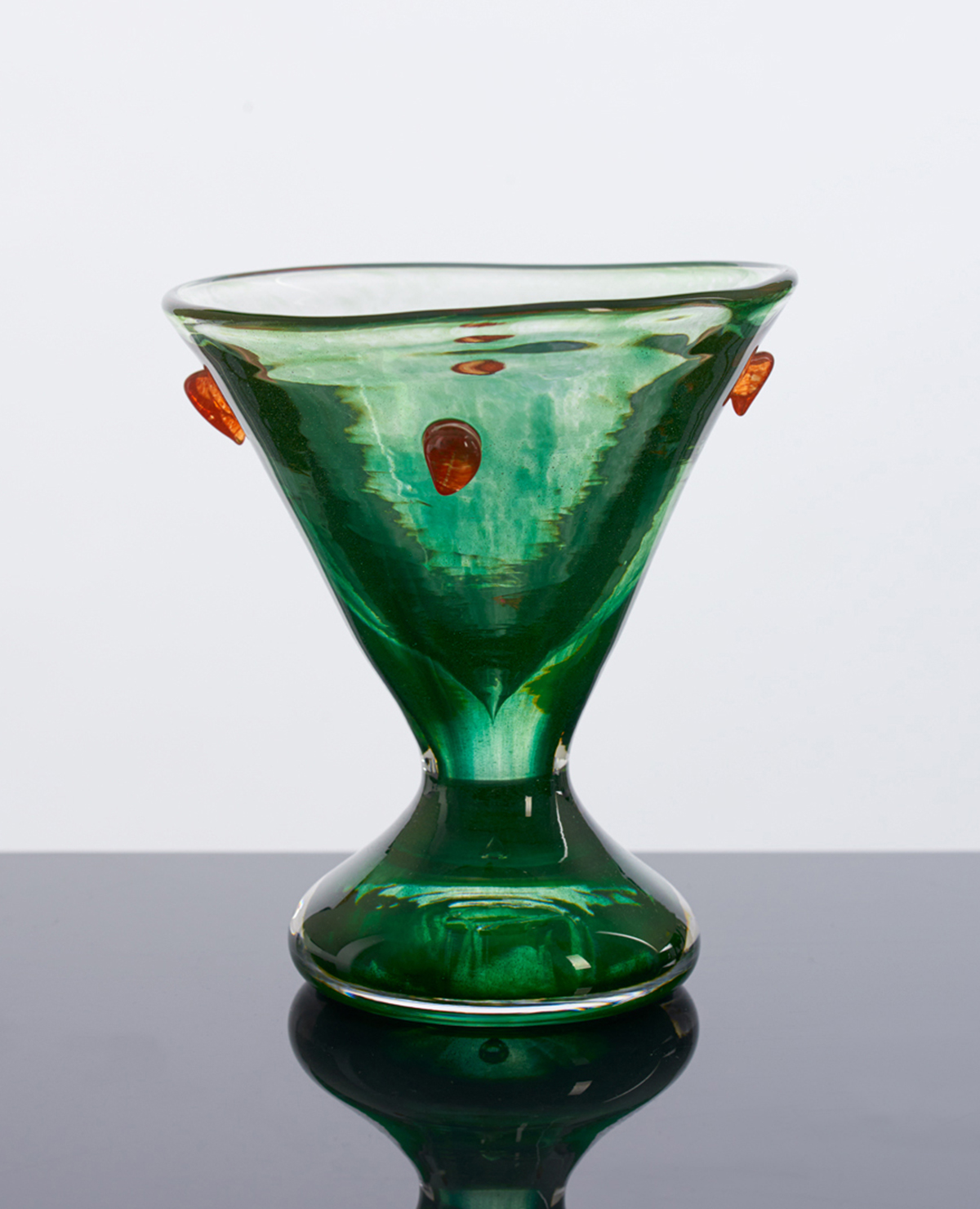
Let’s start at the beginning. Where are you from, and can you tell me about its impact on your work?
I’m from Haarlem, a small town near Amsterdam and close to the Dutch coast. My parents both have backgrounds in the arts. My mom was trained at the design academy in Eindhoven, where she studied product design, and my father is a sculptor. My parents kept a large collection of carefully selected objects in our family home, from strangely shaped stones and fossils, to African artifacts, to glasswork by Lalique. They also kept a large collection of books, a lot of which were about arts and crafts from all over the world. Being able to touch all those objects and browse through those books probably gave me my feel for aesthetics. Maybe most important of all, my father used to take me to his studio to show me the projects he worked on. I still work in that studio today.
Let’s talk about your creative journey. What have you made in the past?
I was trained as a jewelry designer at the Rietveld Academy in Amsterdam. In my final year there, we were given a workshop on working with resins, and I was hooked right away. After experimenting with the material for half a year, I managed to find my own way of working with it, and I graduated with a series of objects and wearables made mostly from resin. It got some good attention at the time. I kept making jewelry for a little while, but simultaneously I started getting involved in the Dutch art world. This changed the way I treated my practice, and I felt like I became less restricted in my working methods. At the time, all I wanted was to make large installations and sculptures. After scrambling for a while and doing a lot of technical commissions for other artists, I got asked one day by an artist collective to design cocktail glasses for the futuristic movie they were about to shoot. This was my new venture into the design/applied realm, and it changed a lot for me.
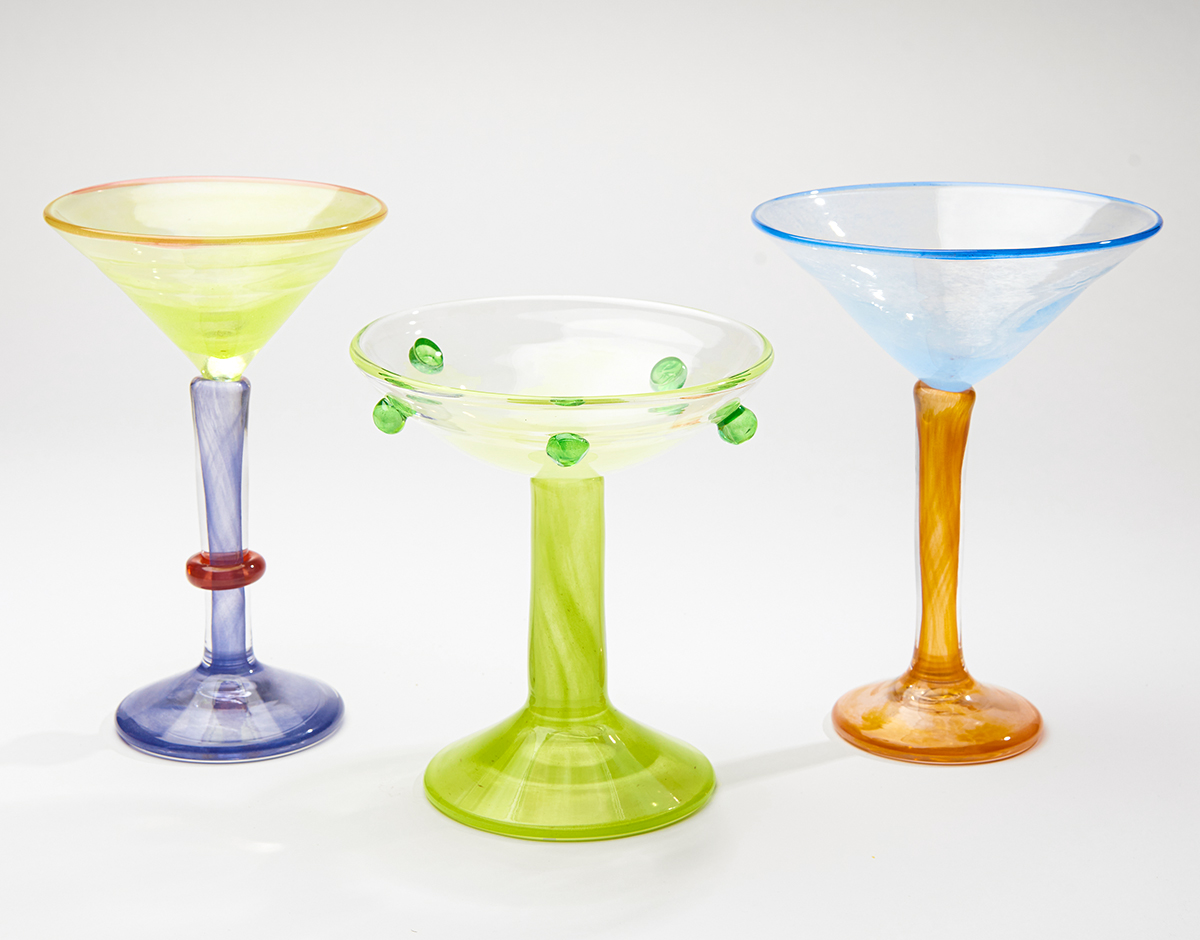
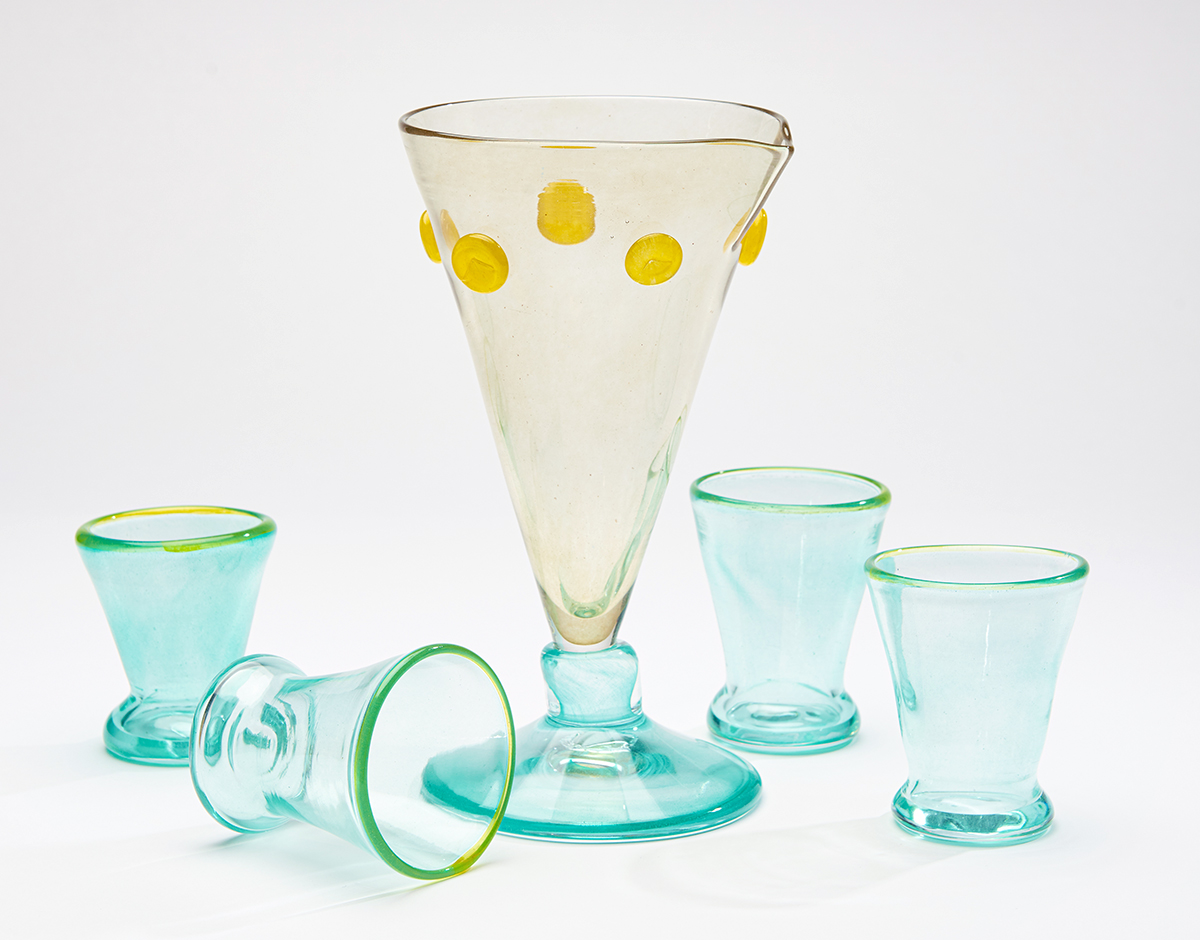
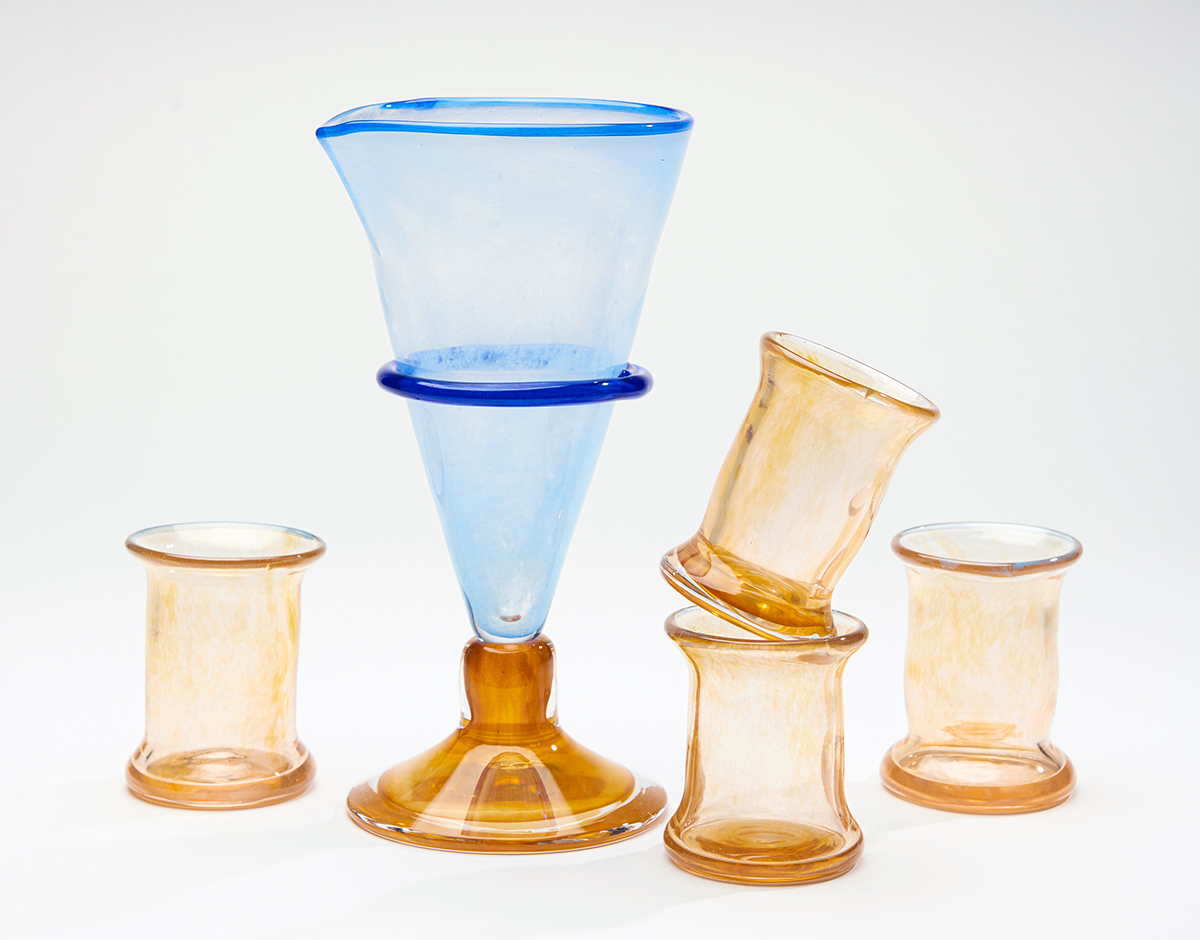
What have you been making lately?
After an attempt to design a series of glassware for Jacquemus, I took the opportunity to keep working with glass. I had been wanting to work with glass for quite some time already, and this was the perfect trigger to make the switch. I have been mainly focussing on glass since the beginning of this year, trying to slowly move away from my previous work, which was mostly working with resin and other synthetic materials. However, it seems I can’t completely let it go, as there are still some great new things to discover, and some commissions to work on.
This is your first foray into glass, though I get the sense that it’s been long requested! Can you tell me about the transition? Was glass always the goal?
I have always been obsessed with traditional crafts and techniques, so in a way it seems only logical that sooner or later I would make the switch. The fact that people were questioning the “realness” of the materials I was working with triggered me. On the one hand, I liked making pieces that mimicked glass and could fool the viewer. On the other hand, I started to dislike the synthetic character of the materials. You couldn’t use the pieces for what they were “meant” for. For a movie prop, that’s okay, but if you sell them in a gallery or showroom, and you can’t be there to tell the story, it’s a different thing. The goblets that I made were quite funky in appearance, so it wasn’t an issue to see them as a purely aesthetic object. But in my opinion, making them functional really adds an extra layer of value.
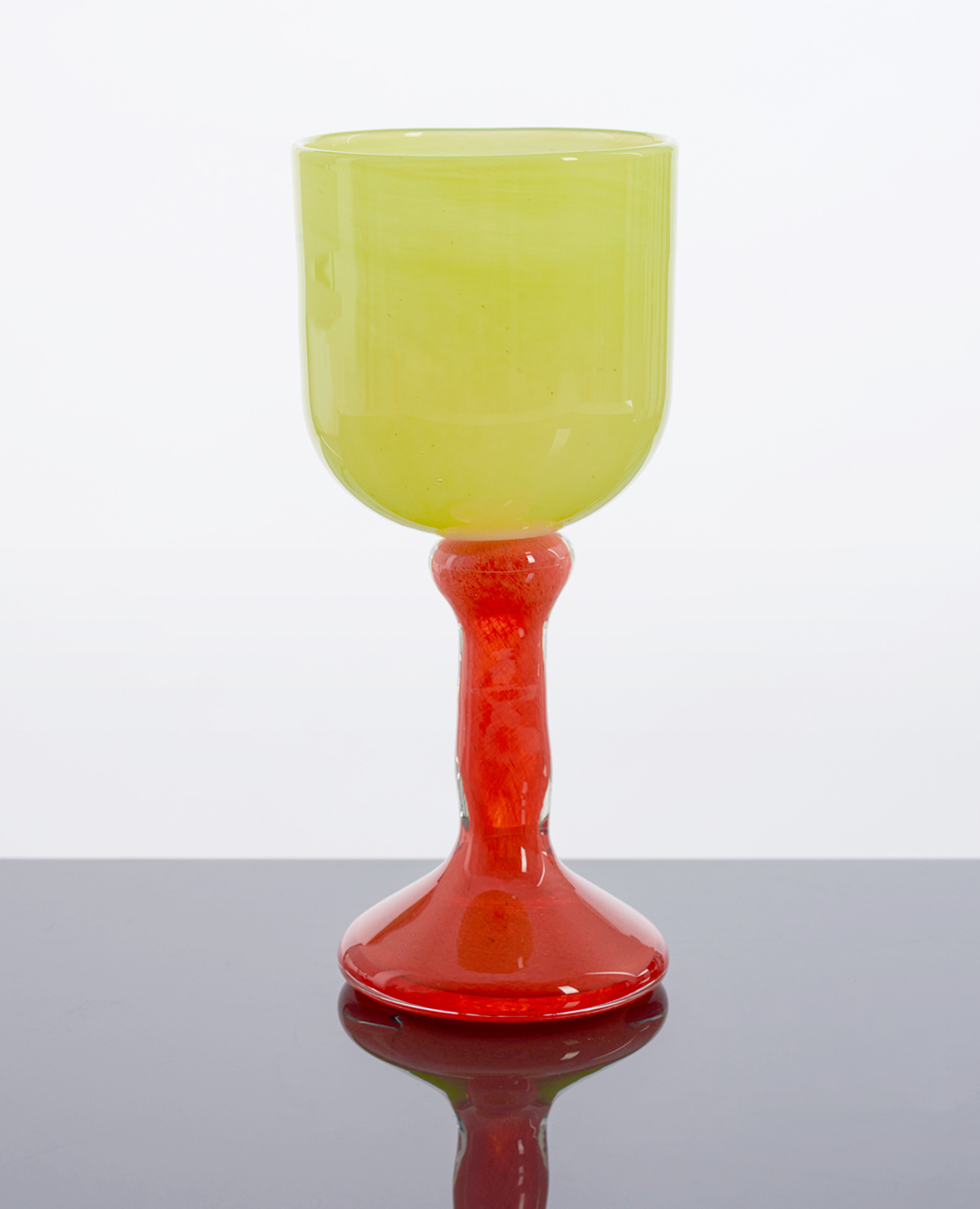
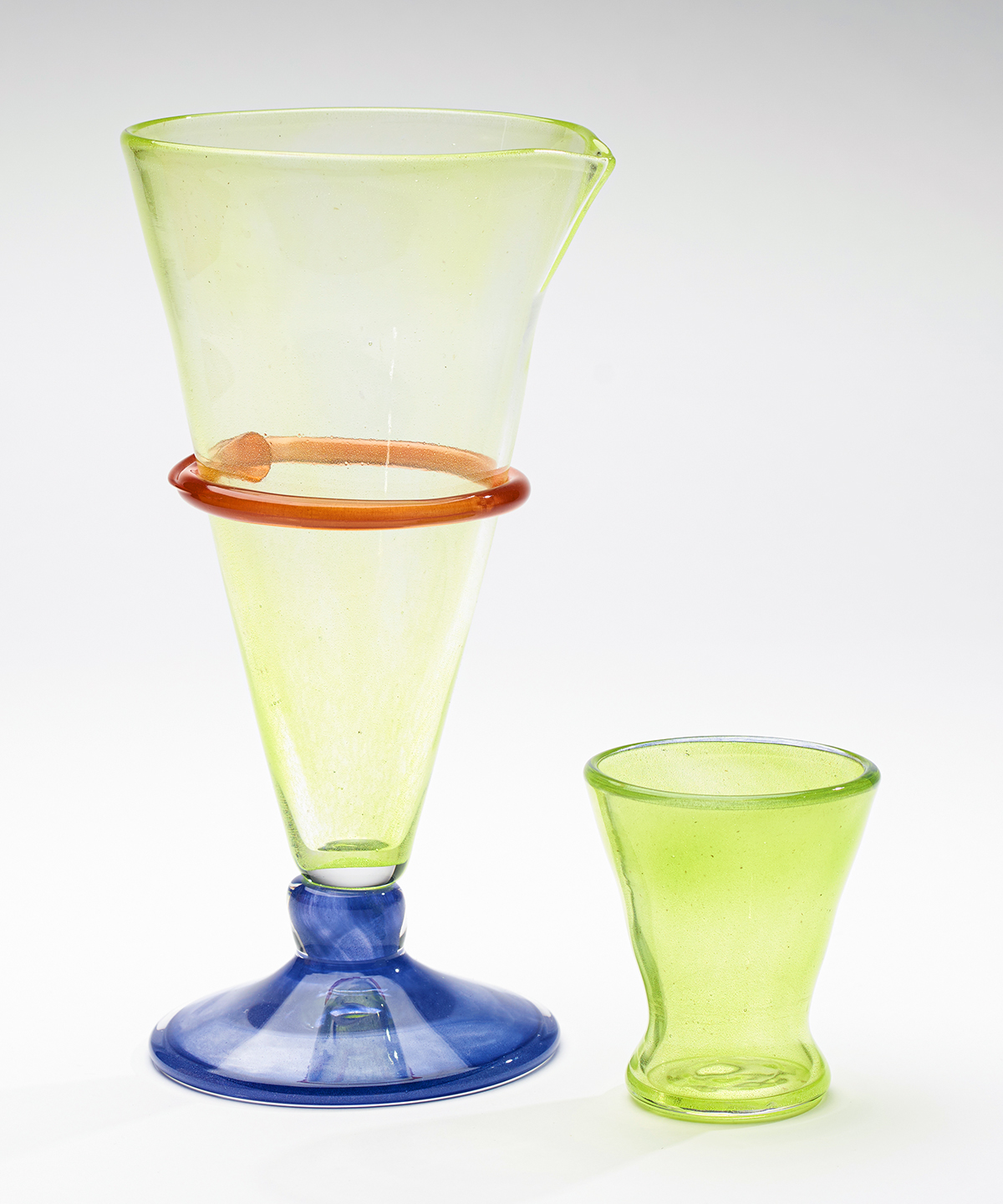

How is glass different from your previous materials of choice?
It is simply incomparable. Like I said, I have sort of an obsession for crafts and techniques. Working in glass requires outstanding craftsmanship. Before working with glass, I did almost everything myself in my atelier. Now, I function at most as somewhat of a conductor of the making process. I am working closely with the experts at Van Tetterode Glass Studio in Amsterdam. They have been a tremendous help and support in the development of my glass pieces. So, I go to their studio with my sketches and guide the glassblowers through my ideas. There are many ways to work with glass, but to me it seems best to let a lot just happen naturally. I love the fact that tiny mistakes present themselves in the process. That just a little bit too much pigment is added on one side, or that out of five lumpy ornaments, one is significantly bigger. It all adds something special to the final piece.
Do you design with a particular vision in mind?
It strongly depends on the nature of the project. My new work in glass is in many ways just an extension of my previous works in resin. To start, I dove into ancient Greek and Roman glass for a while, indulging in their excellence, thinking it would be completely unnecessary to even attempt a new version of them. But, while studying them, I clumsily drew versions of them and new forms and shapes slowly came alive. Then, I tried to make some to-scale models in clay, which was yet another transformation. Finally, I give my designs to the glassblower, who adds his own cocktail of vision and skill to my design. What I end up with is something completely different than my initial designs. It’s that process that defines my overall design practice at its best — the allowance of naturally-occurring transformations and flaws in my designs.
Of course, it’s not always like that. I also do commissioned work for which a client may have something very specific in mind. Lately, I put more effort into explaining to a client how I work, which gives me more freedom.
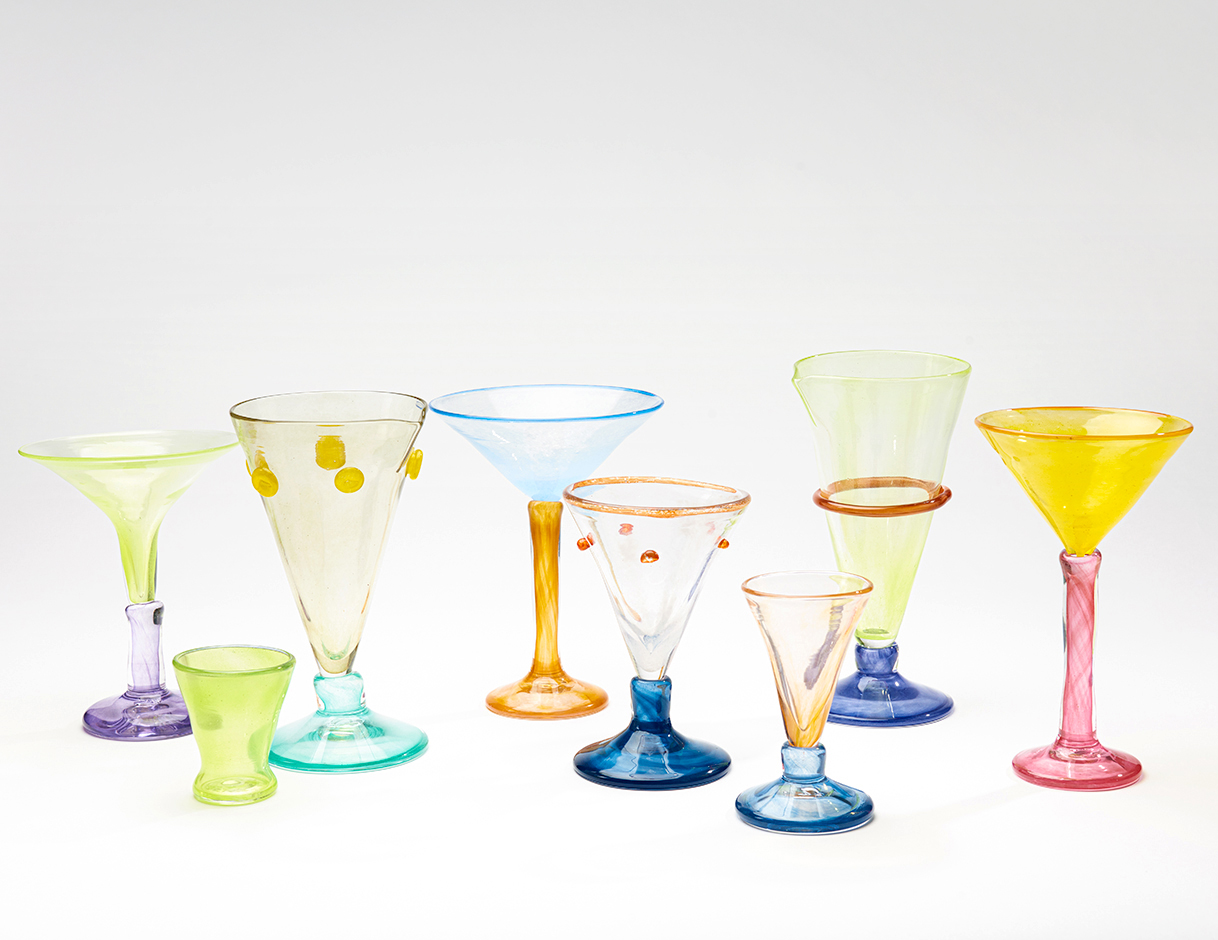
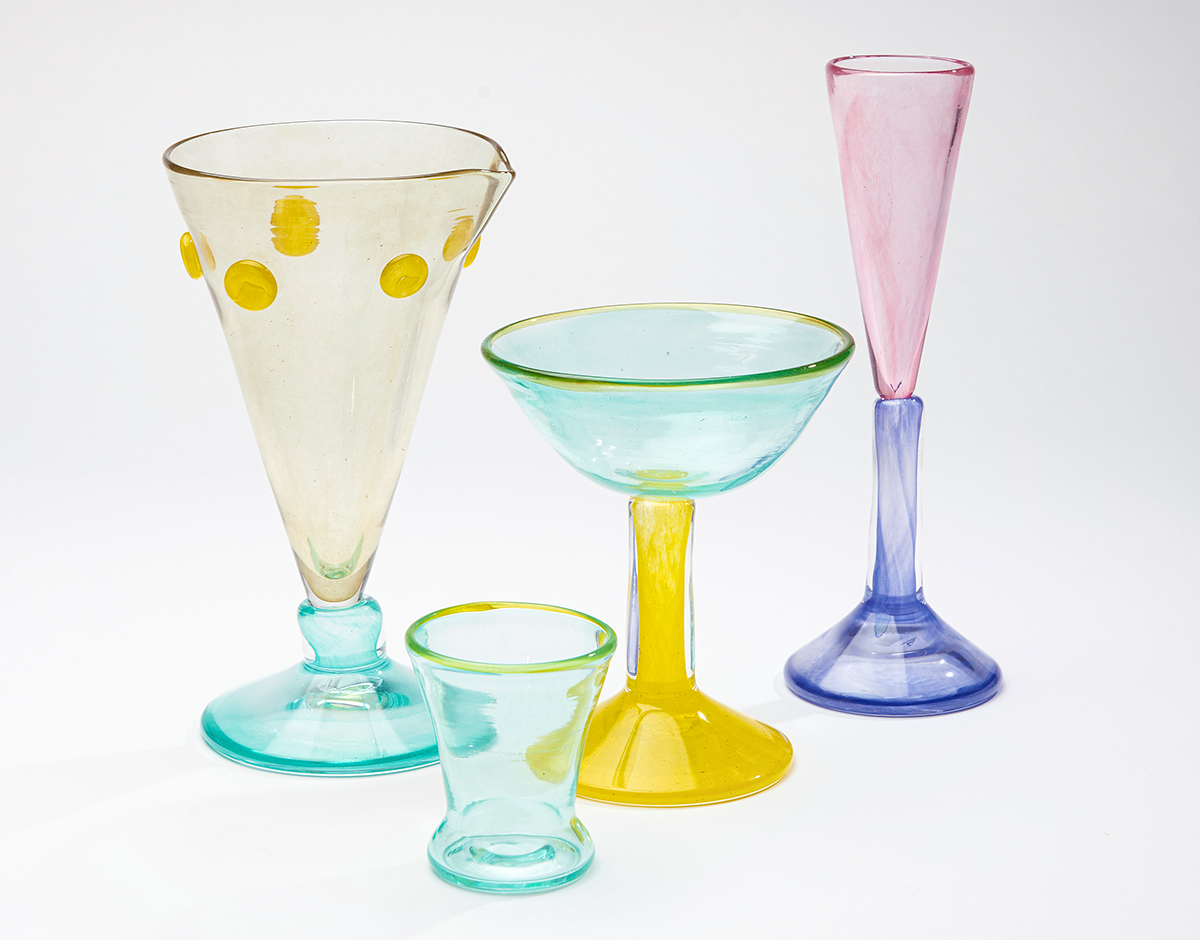
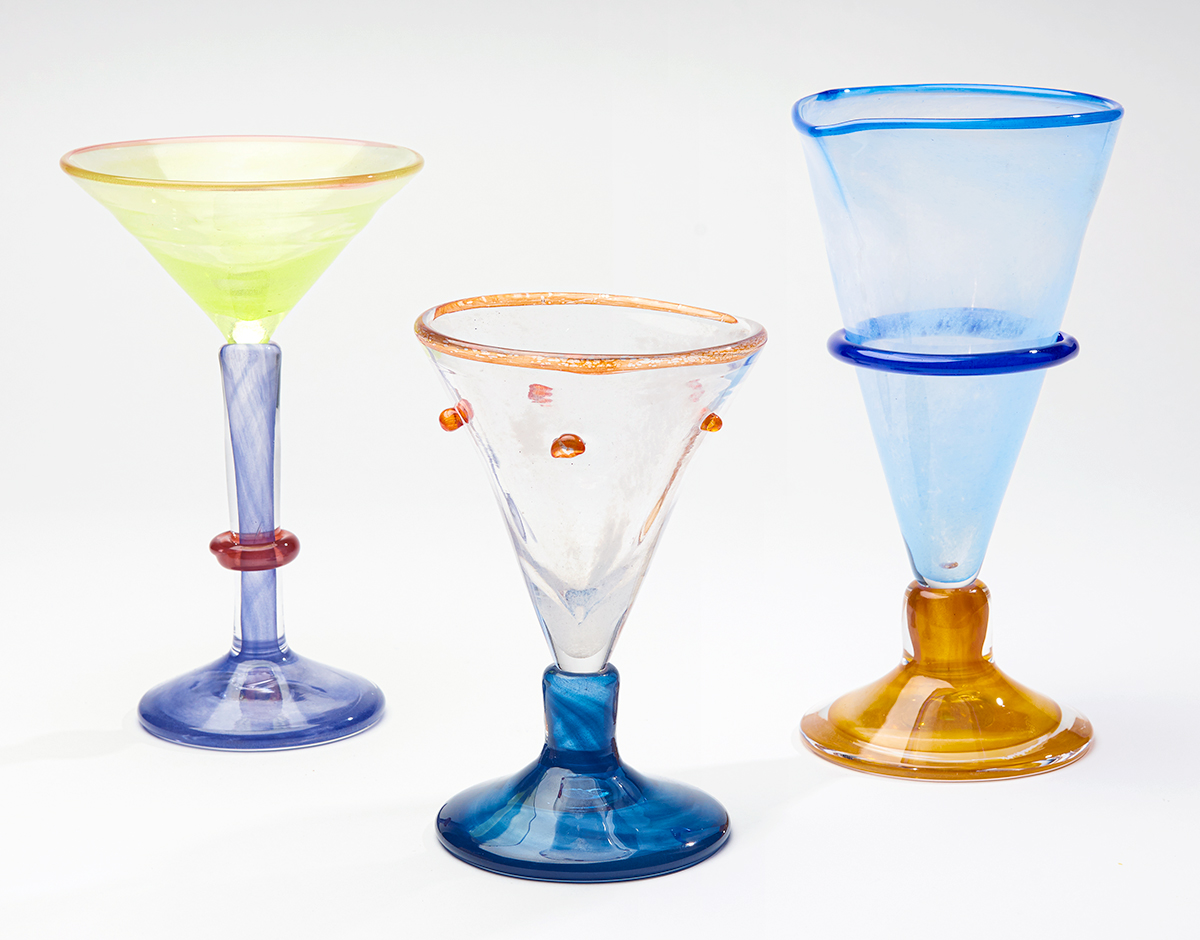
Your work is so colorful. What is your relationship with color?
I don’t think naturally I have a special or different relation to color then anyone else. Except that maybe my parents were always consciously and carefully making decisions about colors in and around the house. It is mostly because of my work that I started using so many different colors all the time, that at some point it became easier to make decisions about what colous to pair, for example, or what pigments to mix to get to a certain shade of green.
However, after years of working deliberately with color, it still remains elusive within my practice. Color is so very personal. The piece I like best from a certain batch can be the one that doesn’t sell.
What about the idea of functionality in art?
I have always felt somewhat obstructed by disciplinary boundaries. Of course, these boundaries aren’t actually really there, but as a jewelry designer who made objects that mostly couldn’t be worn, these made-up boundaries could sometimes feel like real obstacles. In my first two applications for grants, I addressed this issue extensively. I am therefore also very happy to see that there has definitely been some forward developments on this matter. I really admire some of the young artists that are taking very unconventional approaches, like Sigve Knutson and Thomas Ballouhey, who both take functionality and form to new levels. But I also see this more open approach in other fields, for instance the work of Tommy Smits, a photographer who started making frames that are sublime pieces of art themselves.
What or who would you like to design for?
There are so many scenarios that I could see myself designing for. Recently, I was visiting an old ice-cream joint close to my home. You could see that the interior hadn’t been changed since the 80’s — mirror walls with beautiful glass ice-cream coupes carefully displayed all around, colored spotlights and wooden plinths framing the space. I fantasized about how fantastic it would be to design such a place from scratch, from the space itself to all the items needed. A commission like this would be so much fun. On the other hand, working for a huge fashion brand (which nearly happened with Jacquemus) would be something I would really love to do. Or, designing a fantastic set of glassware for a brand like Hay, so that it could be a little bit more accessible for a wider range of people. A public sculpture is also very high on my list.
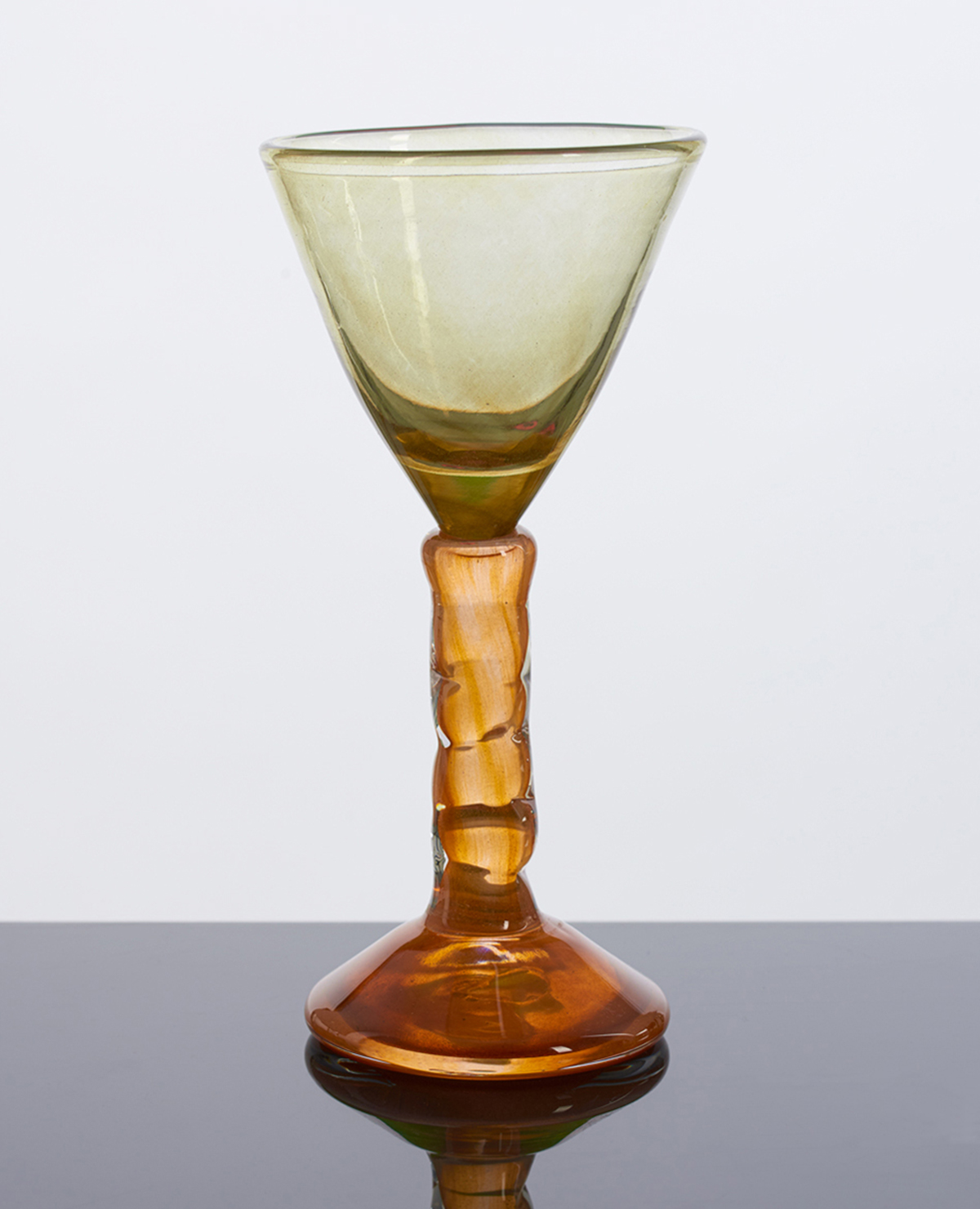
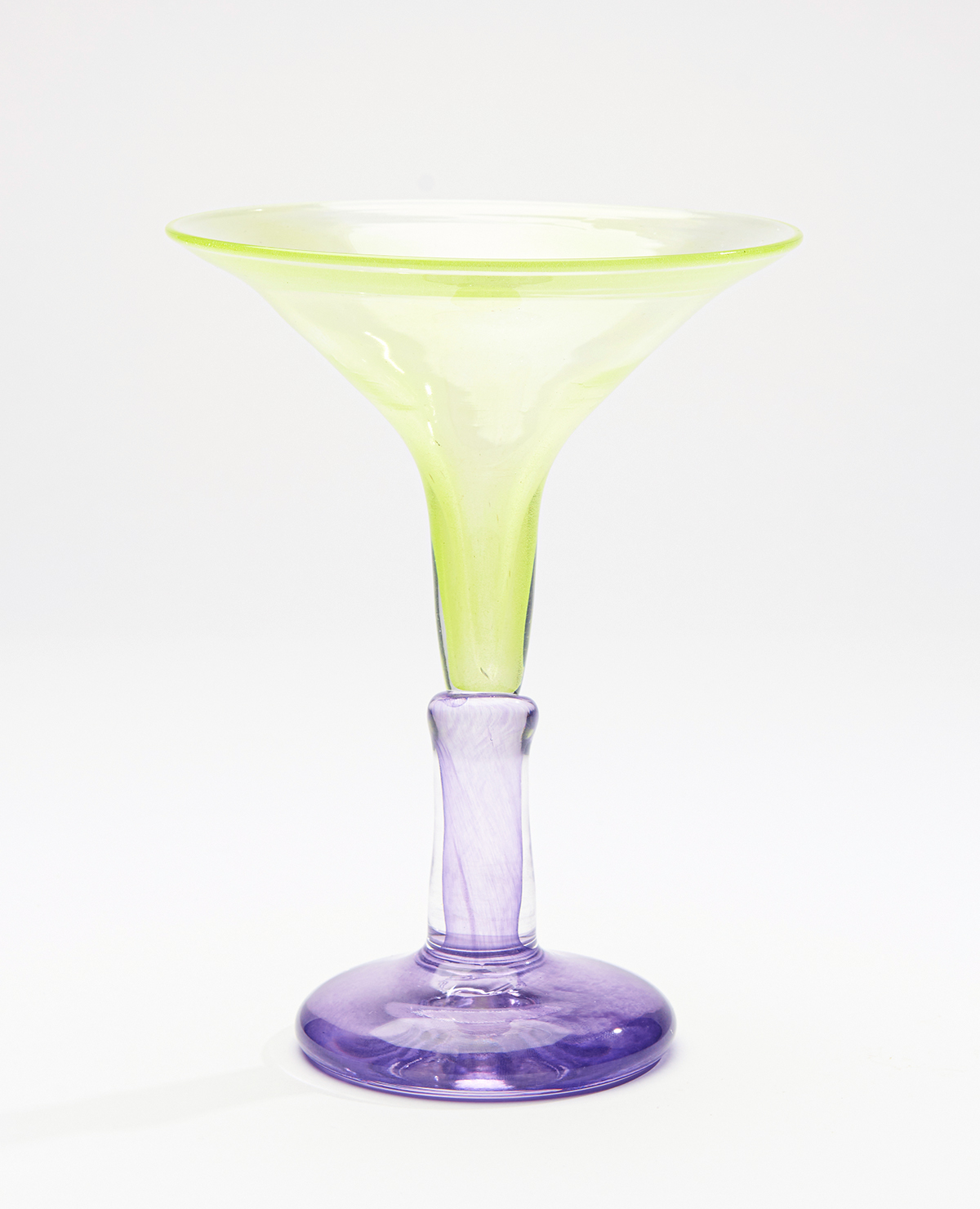
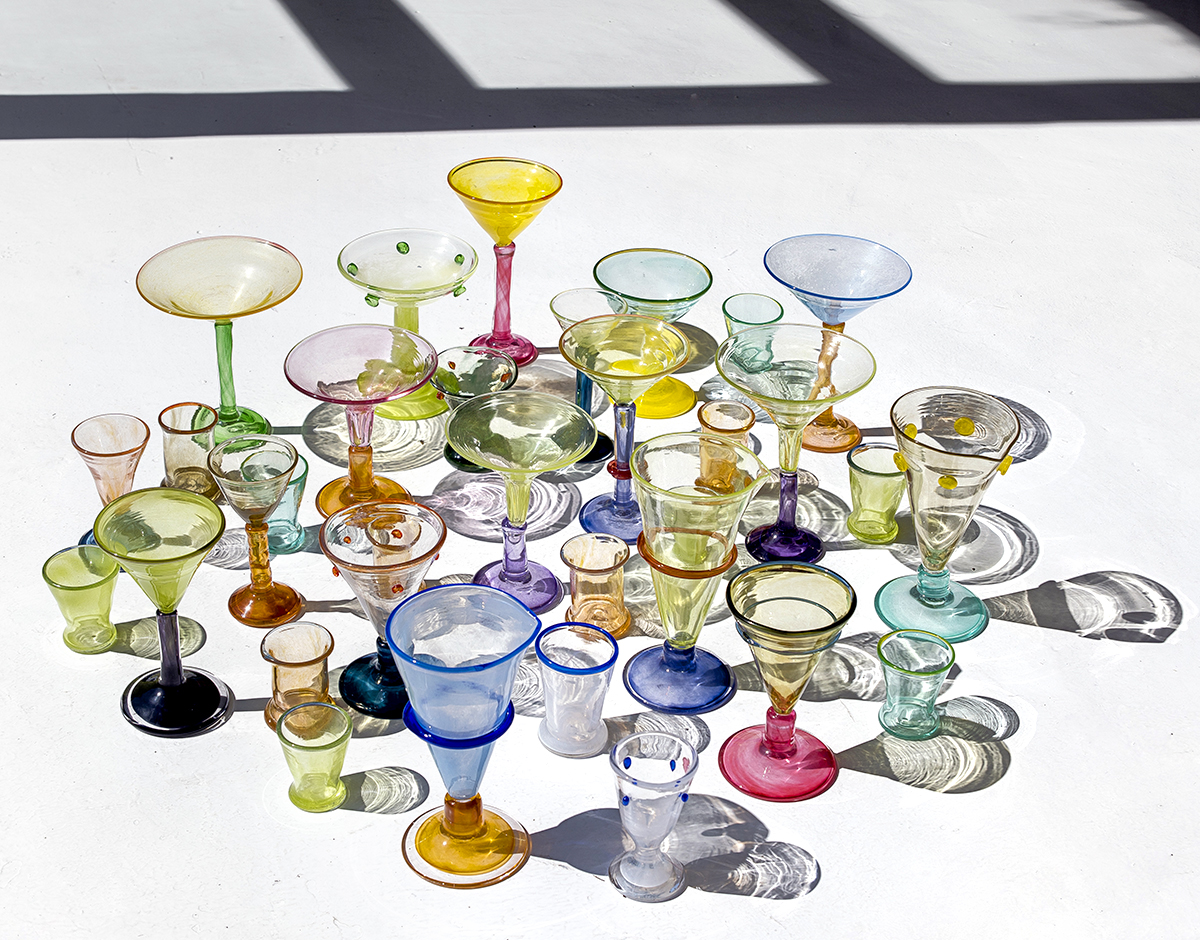
How do you envision your pieces living in the world?
I always had this vision of archeologists finding my pieces in the far, far future and subsequently exhibiting them at the Natural History Museum 2.0. But that’s maybe not the living world yet. For now, I hope that my glass pieces will actually be used, that some will end up in prominent collections along the way, and that just enough will survive to see that museum one day.
Maybe it’s just me, but I’m picking up on some fantasy vibes in your body of work. Is that true, or just my own bias?
I have always had a passion for almost anything mysterious and supernatural. I am actually not deeply invested in these topics — I keep my distance — but I am still fascinated by them. From UFO sightings to covert government operations, to ancient myths and legends… I think these ideas keep our world, in which most things seem to be known and shared, a bit more exciting. I try to suck it up every night before falling asleep, listening to podcasts and reading books. It surely influences the way I think about my work. I also treat my work as if they are some kind of talismans.
Can you tell me more about that?
As long as I can remember, I always had an interest in artifacts, relics, and talismans. When I was a child, I had an obsession with fetish figures from central Africa. I knew everything about them. They are often simple sculptures, depicting men, women, sometimes animals. But they are mostly known because of their mysterious appearance. They have nails and screws and other sharp things sticking into them. Often, they are decorated with strange objects, like mysterious packages or bundles of cloth. These figures act as powerful objects, used, for instance, to protect a family from an enemy, or ensure the upcoming harvest succeeds. We used to have one in our childhood home, and I would tell stories about the figure to friends who would come over to play. That type of radiant power that sculptures like that can possess is something I always found very appealing. In one way, I like my work to be attractive, but then again I also want my pieces to have this strong edge. I want someone to feel that there is just a bit more going on then just the candy-like glass that they see. I like the pieces to breathe a certain force.
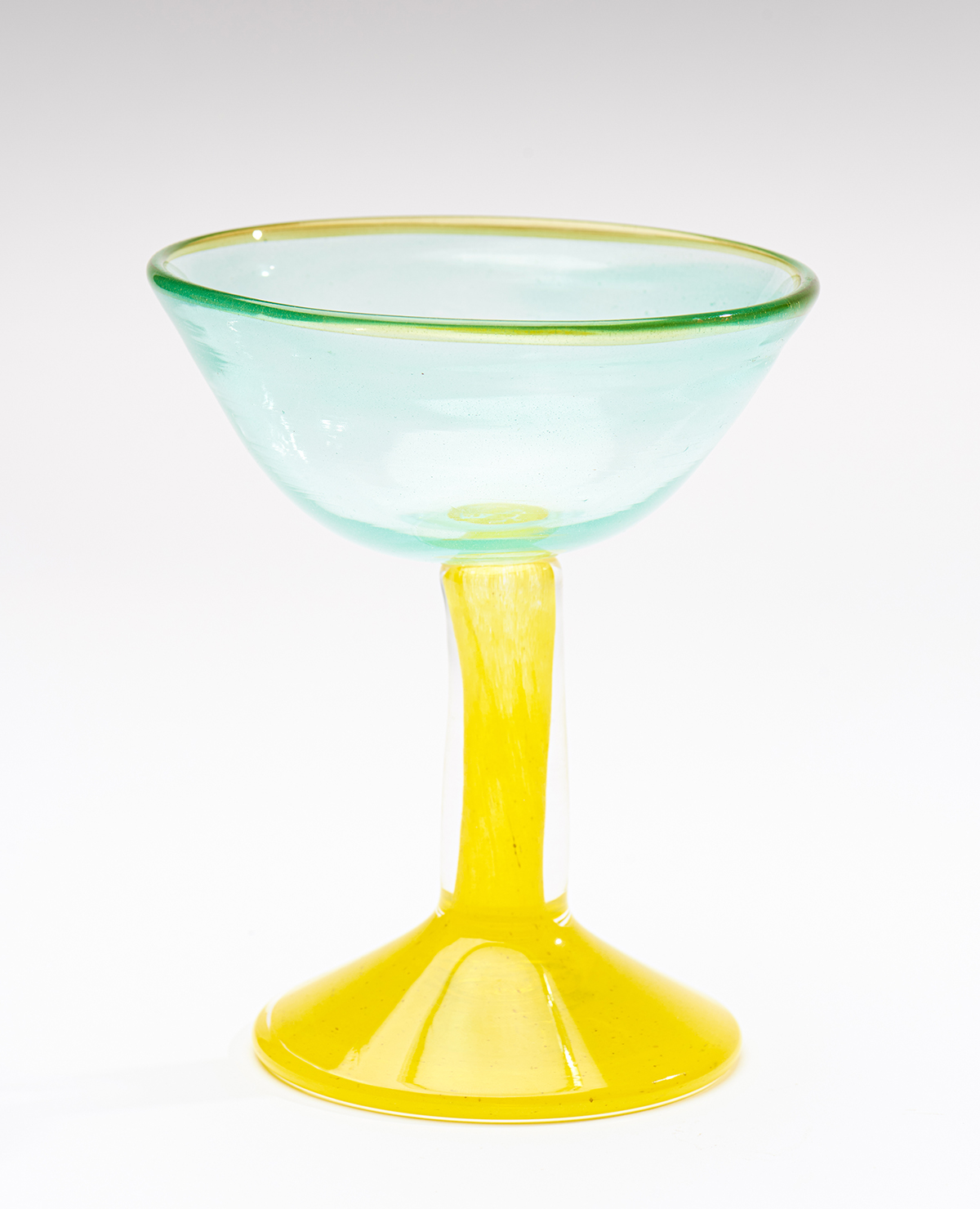
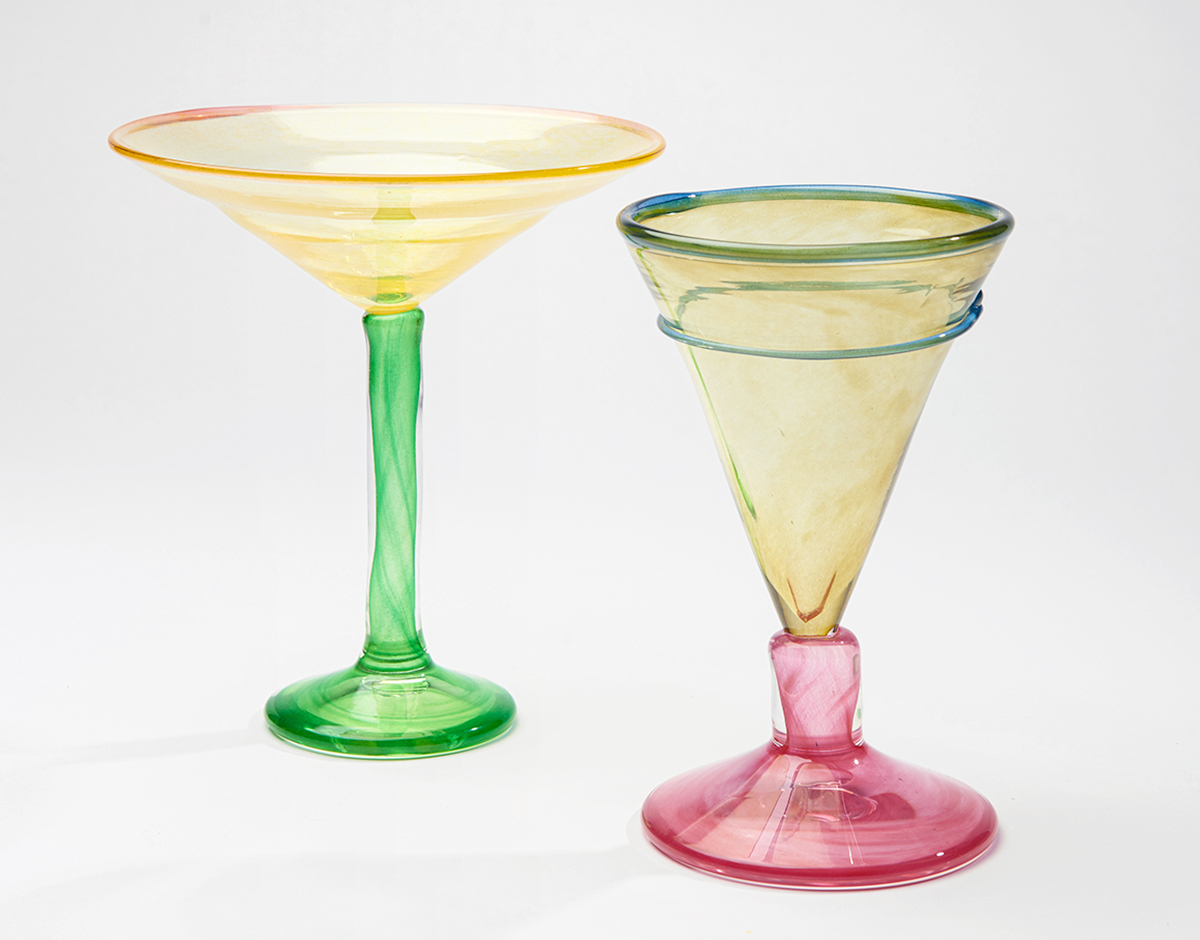
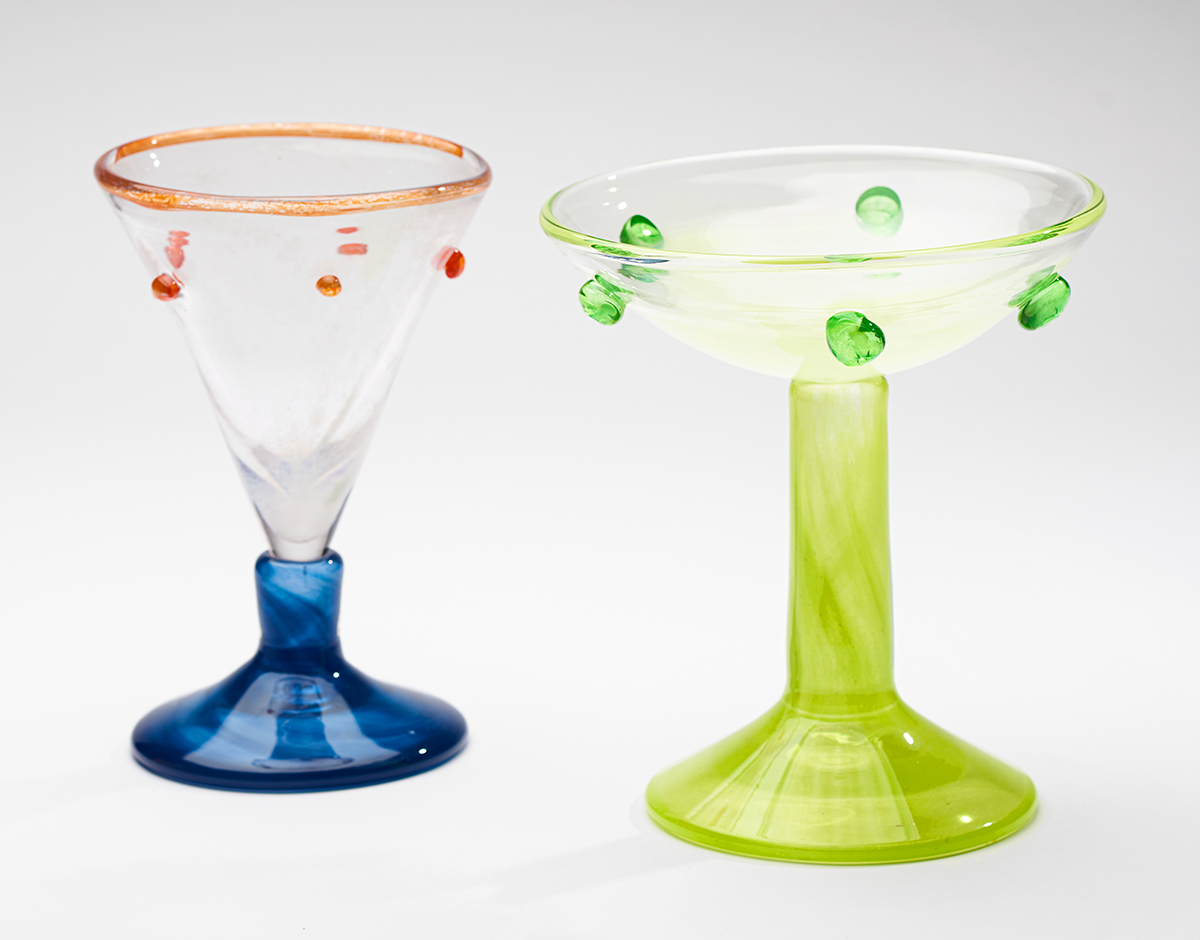
Is design a kind of alchemy?
I don’t think this is always the case, and it doesn’t work like this for every artist, but alchemy is definitely a word I like to use in describing my working process. Most of my work forms itself after a period of experimenting with shape, dimension, and color. It’s the idea of speculatively using crafts and material to produce an object that surprises even the maker.
Do you have or resonate with a personal design philosophy?
I don’t hang on to a very clear philosophy. But there are some things that I personally believe in, or higher levels of being an artist that I’d like to archive. For instance, I said I always had a passion for craftsmanship, and I really believe that diving into a certain technique, even if it is just for a short while, empowers you. It can be because technical insight triggers certain synapses in your brain, or it could be just the simple meditative aspect of the act itself. I believe it helps an artist or designer grow creatively.
On another level, I see my dad still working passionately in the old studio. Earlier in his career, he did a lot of commissions and had his work exhibited in galleries, but somehow he managed to always work mainly for himself for the fun of it. I figure this ease might come with age, but it is great to see he doesn’t have anything to prove. He dreams and he makes. That must be great.
